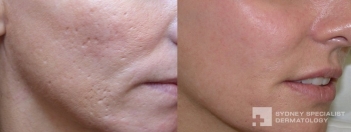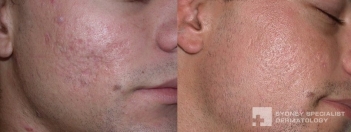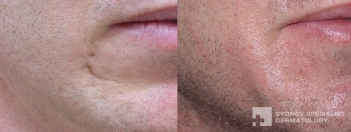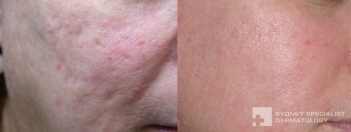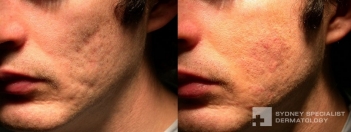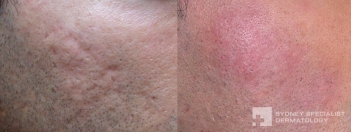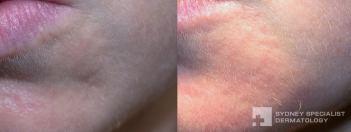Acne Scars and their treatment
Acne scarring can cause an enormous amount of distress for those affected. Treatment of acne scarring is a specialized area of medicine and dermatology. It is not possible to re-move all scarring but with persistence, significant improvements can be achieved. Usually a combination of treatments that is suited to an individual’s pattern of acne scarring is recommended. There are multiple types of acne scars including ‘ice-pick’, depressed, raised or hypertrophic, and red or white scars, and each requires a different approach to treatment. Treatment of acne scarring almost always requires repeated treatments over a number of months for best results. Your specialist will recommend a treatment plan that is best suited to your skin. This may include the following:
Fraxel Laser
Fraxel laser is a major break-through in the treatment of acne scarring. Its results have been scientifically shown to be better than any other laser system for treating acne scarring. It uses a simple but ingenious principle of making hundreds of thousands of microscopic laser pin-pricks in the skin. This causes remodeling of the skin and regeneration of new collagen in a very even distribution, smoothing out the clumps of collagen that exist in acne-scarred skin. Typically a series of 5 of more Fraxel laser treatments are recommended at monthly intervals.
Subcision
Subcision is an excellent procedure for helping improve indented scars, especially acne scars. It involves making the area to be treated numb with the use of local anesthetic (creams and injections). A needle is then inserted into the skin and swept backwards and forwards and side to side under the skin to break up the scar tissue that is pulling the skin inwards at sites of scars. Once the scar tissue is separated, the skin is free to lift up to its correct position. This procedure usually results in some mild to moderate bruising and swelling in the proceeding days. It is often repeated at approximately three-monthly intervals for further improvement. It is typical for us to combine this treatment with Fraxel laser and scar excisions.
Acne scar excisions
Certain small and deep acne scars may be best treated with careful excision and suturing. If the scar is small enough then we may use a punch biopsy instrument of size as small as 1.5 mm to excised the scar and use a single suture to close the wound. Sutures are often removed at around day five. Using Fraxel laser soon after scar excision to optimise the result is a common technique used at this practice.
Fillers
Acne scarring often involves some loss of volume from beneath the surface of the skin, leading to depressed scars and hollow-appearing areas. Fillers can help reverse this change. We use non-permanent fillers because of their excellent safety profile. We find that we achieve some permanent improvement with them, however. The longer skin is held in a good position, the more likely it is to stay in that position when the temporary filler has dissolved. We also use fillers to hold the skin in a good position while the skin is healing and remodelling itself after subcision and during or after a series of Fraxel laser treatments.






































